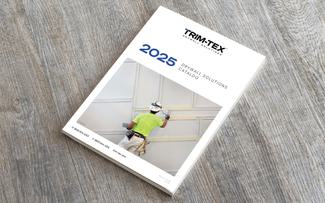When cold weather comes through, it can often cause the top chords of a truss-rafter roof assemblies to expand, and the bottom chords to arch up in the center and pull away from any wall partitions they’re attached to. That’s called “truss uplift,” and it can be a serious problem for newly constructed homes, breaking joint tape and causing ugly cracks where your walls meet your ceilings. If it happens, you can retape and refinish these areas, but don’t be surprised when it happens again next winter. Or you can start preventing truss uplift cracks from ever occurring in the first place by using a drywall accessory like Truss Backing Angle, like these forward-thinking drywallers we met in Highland Park, Ill.
In this edition of our “Jobsite Journals” series, we met up with Omar and Agustin Chavez from Power Drywall, Inc., who wanted to get proactive about truss uplift cracks before they crop up. When Agustin found Truss Backing Angle in the Trim-Tex catalog, he saw its potential and reached out to us to show him how to use it in a new single-family home they were building.



















